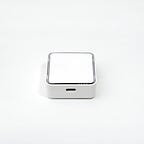Are You Wearing the Right Mask?
Researchers ranked more than a dozen masks on how well they might protect wearers and those around them from COVID-19.
The U.S. CDC (Centers for Disease Control and Prevention), WHO (World Health Organization), and public health officials recommend wearing face masks to control the spread of COVID-19. People are now wearing many different types of face coverings, including bandanas, hand-sewn masks, and disposable medical masks. In many cases, mask choice is dependent on availability; people use what they have.
But how effective are each of these face coverings? Turns out, not all are equally effective at actually catching the respiratory droplets that may contain the virus.
Here is the list, from least effective to the most effective:
1. Neck gaiter
Beloved by runners and cyclists, it ranks worse than no masks at all. The porous fabric may break the larger particles into smaller ones, but will still be inhaled by the user. Because they essentially aerosolize the wearer’s respiratory droplets, it doesn’t do a good job of blocking particles.
2. Bandana
Used since the days of cowboys, a bandana is perhaps the old-fashion way to keep dust and other particles away from you. It provides some protection but is one of the least effective in the study published in June in the journal Physics of Fluids. Although it can reduce the range of particles expelled during a cough, it scores lower than an uncovered cough at stopping the smallest aerosolized respiratory droplets.
3. Cloth mask
The effectiveness of a cloth mask ultimately depends on the fabric used, but according to an article published in The Journal of Family Practice, single-layer cloth masks may only filter out ~35% of airborne particles. So, a typical cloth mask can only be 50% protective while generally, low-quality cloth mask made of thin materials is around 10% to 20% effective.
4. Surgical mask
Easily produced, easily distributed, and fairly cheap, almost everyone who gets a hold on a mask will wear this. You probably have this too. These flat, thin, paper-like masks are usually white and light blue. According to a 2013 study published in Aerosol Science and Technology, surgical face masks can filter out between 60% to 70% of inhaled particles.
As only a tiny fraction of droplets got through, studies have shown that diligently wearing surgical masks in public spaces can significantly reduce the spread of respiratory infection.
5. Cone-style mask
Designed to fit it over the mouth and nose with a strip of metal at the top, the mask can completely seal the outside air from coming directly into our nose and mouth. As the air will be 70% to 80% filtered, so it provides the wearer with good protection against inhaling airborne droplets.
6. N95 mask
The most used and sought after mask by healthcare professionals, N95 mask offers the most protection against novel coronavirus and other respiratory diseases. N95 mask protects the person wearing the mask because it filters out 95% of particles, large and small, when the wearer breathes.
Due to being short in supply and that healthcare worker and other medical first responders need it, the CDC does not recommend the general public to buy or wear N95 masks. But if you already have it, use it! It’s the best mask that can protect you.
7. Gas mask
The king of all masks, the gas mask can protect you from anything — wildfire smoke, poisonous gas, biological and chemical agents, and more. It filters out 100% of airborne particle and comes with separate valves to help you breathe out, making it comparable to a HEPA (high-efficiency particulate air) filter used by the US military.
Despite this, obtaining a gas mask for protection is very unpractical, as it’s heavy and bulky to wear on a daily basis. Additionally, the high price (average $200) and maintenance don’t make it economical and convenient for mass usage during this pandemic.
To inquire more about Brilliant & Company, please do not hesitate to drop us a line:
- CEO / Ryan Yun / ryan.yun@brilcom.com
- Global Marketing Manager / Steve Tan / steve.tan@brilcom.com
